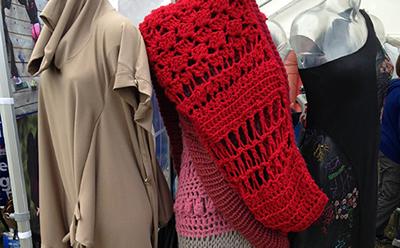Neuroscience at the New Forest Show

Researchers from University of Southampton attended the New Forest Show to promote neuroscience research and the Wessex Medical Research charity.
This July researchers from the University of Southampton attended the New Forest Show, not to admire the prize-winning flowers and vegetables and the hundreds of show rabbits, chickens, cows and horses, but to promote neuroscience research and the Wessex Medical Research charity.
Wessex Medical Research was founded 38 years (1977) ago by Professor (later Sir) Donald Acheson, along with Lord Northbrook and others. The charity works to fund medical research and is largely supported by public donations. This year, for the first time, Wessex Medical Research organised a stand to promote their charity and the research it supports at The New Forest Show.
.JPG_SIA_JPG_fit_to_width_INLINE.jpg)
The New Forest Show is spread over three days and is frequented by 1000s of local people and holiday makers. Members of the University of Southampton Neuroscience Group (SoNG) brought three themes to the event. The first day saw early career researchers Shmma Quraishe and Joanne Bailey, along with PhD students, Prutha Patel and Grace Hallinan, teaching children and adults of all ages what the brain is made of and how the brains cells, or neurons, are able to form memories. A particular focus of the event was to try and pick apart the social stigma associated with mental health disorders. Dresses designed by students from the Winchester School of Art, as part of a collaborative project entitled ‘Changing Minds through Neuroscience Inspired Fashion’ were displayed. The dresses depict the symptoms of the disease, social isolation and the cognitive and behaviour changes the affected person feels. They stimulated conversation and questions from the general public who hopefully left with a better understanding of brain disorders.
.JPG_SIA_JPG_fit_to_width_INLINE.jpg)
For the children, our scientists of the future, play-doh was on hand to demonstrate the different compartments of a neuronal cell and their function. Overall, the day was a great success, and hopefully this will be reflected in future donations to Wessex Medical Research.
The second day of the show was centred on research into alcohol addiction and withdrawal. Professor Lindy Holden-Dye, along with PhD students, Caroline Rivers, Samah Zarroug and second year exchange student, Jessica Rigolon, took C. elegans worms to the show, demonstrating in a ‘live’ experiment the effects alcohol has on the nervous system. C. elegans is a simple nematode worm and provides a fantastic model system to assay for behavioural and neurological changes and can be used to track worm intoxication and withdrawal from alcohol, therefore enhancing the understanding of how alcohol affects the brain. A second year student Chris Manson and third year student Hannah Sked from the University of Southampton General Hospital and Cathy Rule from the Wessex Academic Health Science Network were also on hand to enhance awareness of the support available for people addicted to alcohol, and informing everyone on ‘how much is too much’.
On the third day research into biological timekeeping was highlighted. Visitors learned how internal circadian clocks are able to organise bodily functions, which undergo rhythmic daily changes and can be disrupted during shift work and jet lag. Raising public awareness of circadian clocks is important because they have wide-ranging effects on physical and mental health and well-being. Disruption of daily rhythmicity has been linked to cancer, metabolic disorders such as diabetes, sleep disorders and psychiatric diseases such as seasonal affective disorder. The team consisted of Dr Herman Wijnen, who along with research fellow, Akanksha Bafna and PhD students, Alex Hull and Miguel Ramirez-Moreno, helped interested members of the general public determine whether they had an early ‘lark’ or a late ‘owl’ chronotype. Children and adults were given the opportunity to look at the flies and equipment used for research into circadian clocks, and were able to participate in a ‘spot the differences’ contest comparing model clocks representing the human and fly timekeeping systems.
Joanne Bailey
